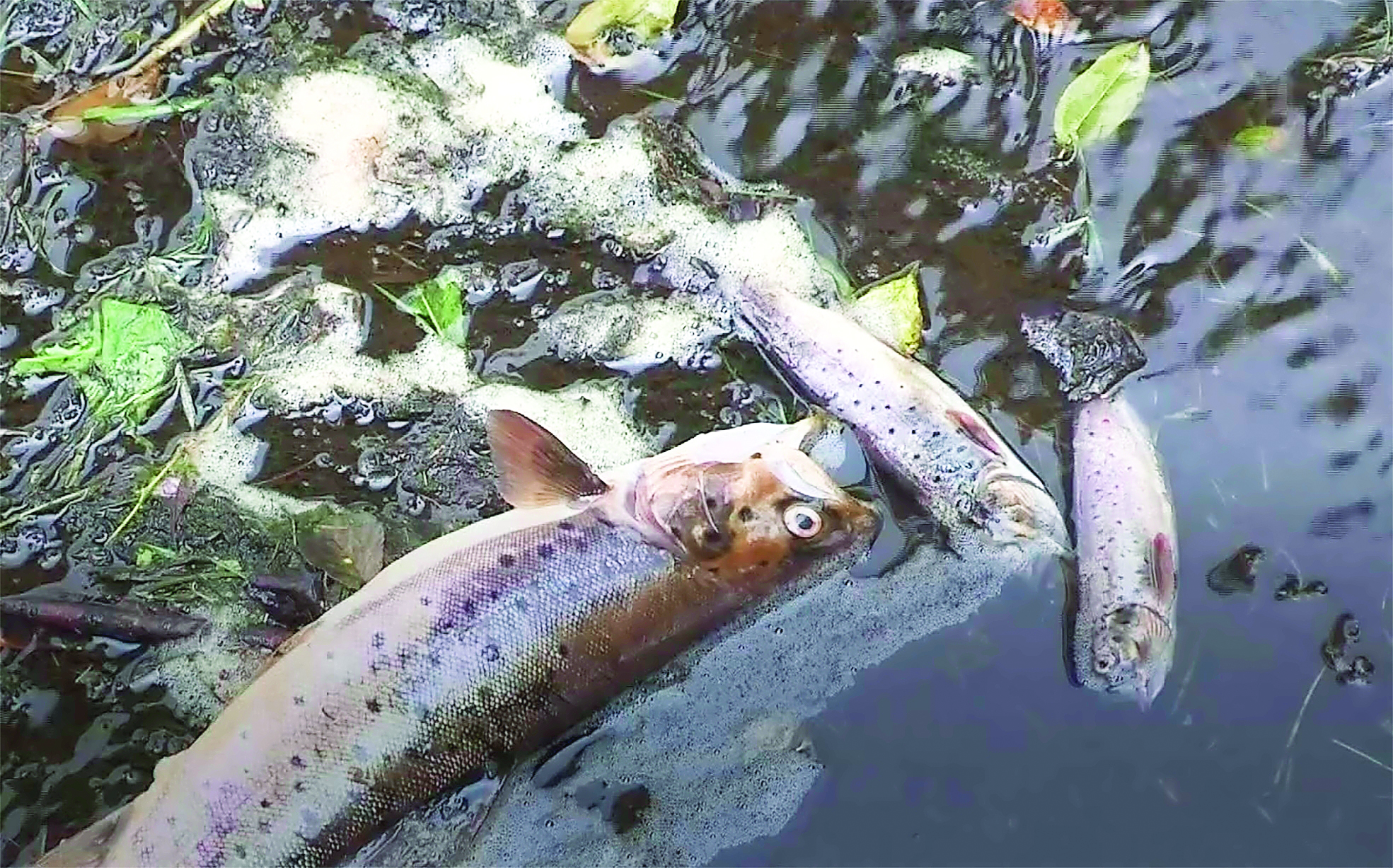THE NI Environment Agency (NIEA) has revealed it is currently investigating a new lead in its investigation into the pollution incident at the Glendarragh River in Kesh last month, which resulted in the death of almost 2,000 native fish.
A socially-distanced community meeting was held on Wednesday night at the Kesh Community Centre that was attended by over 50 people, including members of seven local angling club, members of the community, local political representatives, and officials from NIEA and the Department of Agriculture, Environment and Rural Affairs (DAERA).
At that meeting, which came six weeks after the pollution incident on the popular angling river, which has been described as “a local environmental disaster”, wide spread dismay was expressed at the apparent lack of progress in identifying both the source of the pollution and the nature of the pollutant involved.
A local angling spokesman told the Herald those present were left with many questions following the meeting.
Stating it had already been established that the pollution had not been caused by agricultural substances such as slurry or silage, as it was “not of an organic deoxygenating nature”, the angler said the interested parties were told an as-yet-unidentified toxic chemical “plug” had been identified as a possible source, which had been located downstream of the Ederney Waste Water Treatment Works.
The angler also stated none of the dead fish had been removed from the river following the pollution incident, with carcasses littering the local marina that is popular with tourist cruisers, with the meeting told dead fish were difficult to analyse as the decompose so quickly.
“Dying fish were seen by angling club members to be present on the evening of September 1st. None were removed,” said the angler.
“The meeting was told no adequate resources are available to identify toxins present in dead fish. Many of those present were very surprised no fish were taken for analysis, and that no toxicology of dead fish was undertaken. The meeting was informed that dead fish are not routinely analysed, as most incidents involve asphyxiation rather than poisoning.”
Raising questions about water treatment chemicals, and pointing to other recent pollution incidents in Lisnarick and Garrison, the angler said the establishment of a body including farmers, anglers and water users was being considered to help enhance and protect the environment of the Glendarragh River.
When contacted by the Herald with questions regarding the timeline of water testing and the steps being taken to prevent another pollution incident, a spokesman for DAERA said the NIEA had “received a number of potential sources of information to assist in their enquiries.”
“A new suggestion was recently received, is being considered and further detail is actively being sought,” said the spokesman. “The outcome of this line of enquiry may help progress the investigation. Alternatively, it may prove to be unrelated. Given both potential outcomes, it is not possible to accurately predict the time required to complete this phase.
“All information provided on this investigation and other water pollution events is welcomed by the Agency and can be reported on a 24 hour basis through the Incident Hotline, Freephone 0800 80 70 60.”
To read more.. Subscribe to current edition
Receive quality journalism wherever you are, on any device. Keep up to date from the comfort of your own home with a digital subscription.
Any time | Any place | Anywhere










